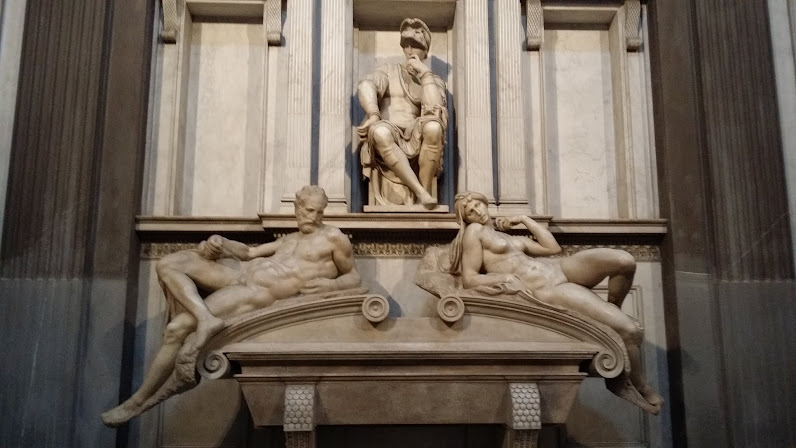Firenze (Florence)
Florence was Florence.
There are already numerous pictures elsewhere on this website. Here are a few more.
Piazza della Signoria - outside the Palazzo Vecchio
In the distance in the picture above is the Loggia dei Lanzi a galleried public sculpture space containing several famous works. Most notable is Celini's bronze of Perseus holding up the the severed head of Medusa but no less striking is the Rape of the Sabine Women by Jean de Boulogne, known as Giambologna. The originals or copies have stood here since 1583
Perseus and Medusa and the Rape of the Sabine Women
We were there a decade ago and little had changed except for the crowds of tourists, that seem to have doubled. Some places that we had walked into without restraint last time now had long queues and several that were previously free now charged admission.
Everything seemed to take longer. The line to the Uffizi was obscene. Even the one for prepaid tickets was several hundred metres long as there was some kind of strike going on, separate to the one that was affecting the railways.
Our hotel was two blocks from the Duomo. We could see it down the street and needed to cross the square to go anywhere on that side of the city like the markets - for meals or to go to the station or buses. But the line to get inside the cathedral ran out into the square and our strategy was to see things we'd missed last time so we gave it a miss.
The Duomo - Cattedrale di Santa Maria del Fiore
Instead we went to the Pitti Palace and to the The Medici Chapels, with Michelangelo's carvings for Giuliano De Medici's tomb, and to the food markets. We also went leather shopping; bought wine and food at the supermarket; crossed and recrossed the Arno; and generally enjoyed the cafés and public spaces.
Coffee and a snack in the central markets and Ponte Vecchio over the Arno River
On the other side of the River is the Pitti Palace. The Palace was built in the second half of the 15th for Luca Pitti but was purchased in 1550 by Eleonora da Toledo, the wife of the Grand Duke Cosimo I de'Medici to become the Medici home, after which it was substantially enlarged.
In 1743 it was bequeathed to the Tuscan State by Anna Maria Luisa de’ Medici when she died, together with the Medici art collection in the Palace itself, the Medicean villas and the Uffizi, on the condition that no part of it could be removed from Florence. The palace houses the Palatine Gallery in addition to the royal apartments and the museum of Modern Art.
The 18th century interior decoration is far from modest. Almost every ceiling is a work of art.
Hanging works include pieces by Rubens as well as many other well known painters.
There are many hundreds.
With appropriate access one can go along the enclosed walkway seen in the lower right,
all the way over the Arno, through the Uffizi, to the Palazzo Vecchio, that you can see in the distance.
A little train would be good.
Florence was of course once dominated by the Medici family who were often in conflict with the Borgia family who dominated Venice. Both families conspired to have their candidate elected as Pope.
Pope Sixtus IV was an enemy of the Medici and in 1478 gave tacit support to an attempt to assassinate Lorenzo de' Medici and his brother Giuliano. Giuliano was killed Lorenzo survived. Lorenzo then savagely purged all those involved, including the Bishop of Pisa, becoming one of the most powerful men of the Renaissance - Lorenzo the Magnificent.
Pope Sixtus excommunicated him and attempted to use military force to remove him but failed. Many educated men of the Renaissance were humanists, seeking wisdom from the pre-Christian Greeks and Romans, so excommunication no longer bore the same weight as it once had. In due course Lorenzo's grandson would become Pope Leo X. In the meantime, Giuliano's illegitimate son by his mistress Fioretta Gorini, would become Pope Clement VII.
Lorenzo was a patron of the arts who sponsored both Michelangelo and Botticelli. Both he and Giuliano are interred in the Medici Chapel in Florence their tombs decorated by sculptures by Michelangelo.
 |
 |
 |
 |
The Medici Chapel
